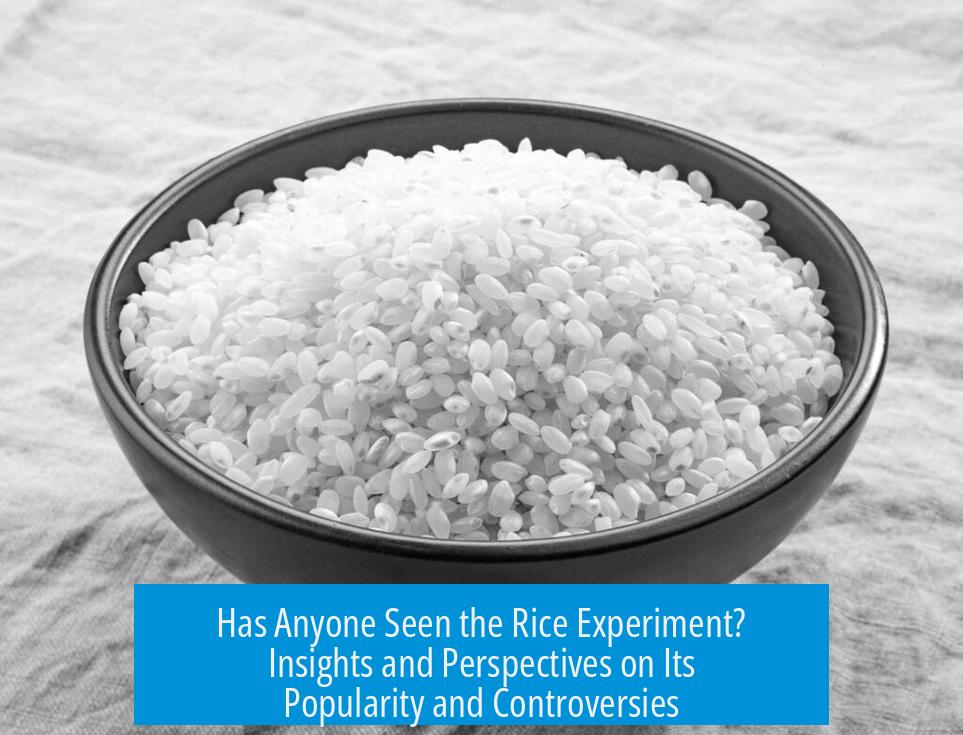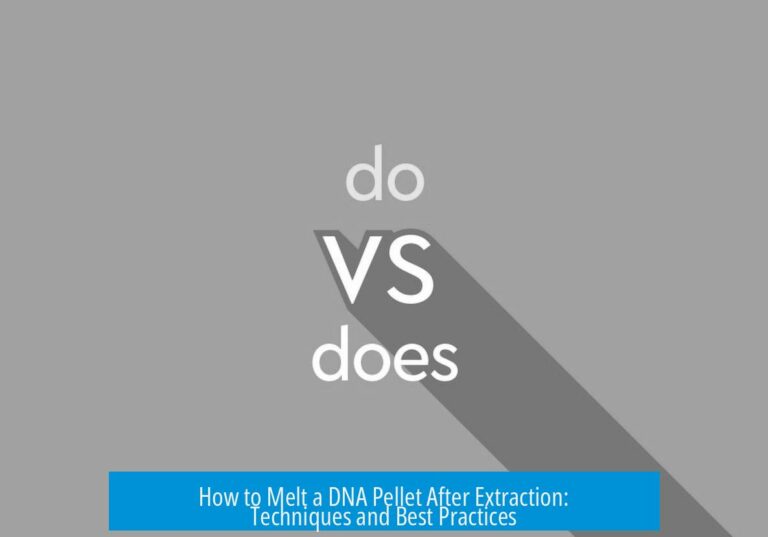The Rice Experiment: Overview and Perspectives
The “Rice Experiment” claims that human emotions and intentions—expressed through words or feelings directed at jars of rice—can affect the rice’s physical condition over time. Proponents say rice exposed to loving words stays fresh longer, while rice subjected to negative speech spoils faster, suggesting that emotional energy influences material matter. The experiment gained popularity largely through social media and anecdotal videos. It has inspired supporters who see a connection between intention and physical outcomes and skeptics who argue it lacks scientific rigor.
What Is the Rice Experiment?
The experiment typically involves preparing two or more jars filled with cooked rice. One jar is spoken to with positive, loving words, while another is addressed with negative or hateful language. Over days or weeks, observers note visual differences in mold growth or decay, using them as indicators of the impact of the spoken energy. Some variations also include a neutral control jar.
Intended Purpose
- To demonstrate that emotions or vibrations can influence physical states.
- To provide a tangible example of the power of intention or energy on matter.
- To encourage mindfulness and kindness by linking treatment of objects with outcomes.
Scientific Criticism and Methodological Issues
Many scientists and skeptics have criticized the experiment’s design and conclusions. The main issues center on bias, lack of control, and uncontrolled variables. Attempts at rigorous replication have mostly failed.
Key Criticisms
- Possibility of Manipulation: Some suggest that participants may intentionally bias results by contaminating jars differently or selectively reporting outcomes.
- Lack of Rigorous Controls: No sealed, sterile environment or randomized trials ensure uniform conditions. Differences in air exposure, temperature, or storage influence mold growth far more than words.
- Selection Bias: Videos and reports often come from believers. Those with negative or no effect might refrain from sharing results.
- No Scientific Evidence: A notable controlled study showed no statistical difference in mold growth among jars subjected to positive, negative, or neutral conditions.
- Alternative Explanations: Variation in temperature, contamination by airborne spores, sequence of filling jars, and cleaning methods affect decay rates independently of spoken words or feelings.
Critics emphasize that the experiment is easy to manipulate physically, and visual results can be deceiving without microbiological analysis. Many call YouTube videos an unreliable source due to their potential for editing and bias.
Supportive Personal Experiences and Beliefs
Despite criticism, many people report personal successes with the Rice Experiment. They argue that the simple act of projecting positive or negative emotions profoundly changes the rice’s condition. Supporters often emphasize that feelings rather than specific words influence outcomes.
Common Supportive Claims
- “Love” jars stay fresh and unspoiled for much longer than “hate” jars.
- The experiment fosters greater compassion, patience, and self-awareness in participants.
- Even if not scientifically proven, the ritual encourages positive emotional states.
- Supporters often link the effect to vibrational energy or frequencies beyond current scientific understanding.
- Many call for personal trial rather than judgment, citing the low cost and effort involved.
Some supporters reference spiritual or metaphysical frameworks, asserting that intentions can change molecular structures or frequencies of water and food. They view the experiment as a pathway to connecting with a deeper universal consciousness.
Uncertainties and Questions About Procedure
There is no universally agreed-upon protocol, which creates variability and confusion.
- Does the volume or tone of speech impact the rice differently?
- Must words be spoken aloud, or is silent intention sufficient?
- Is it the specific words or overall emotional energy that matters?
- How should jars be sealed or exposed to maintain consistent conditions?
- How to eliminate bacterial or fungal contamination from the environment?
Some experimenters have tried to address these by using sealed containers that allow sound but not air particles, or by sterilizing jars meticulously before use. However, variability remains high.
Psychological and Social Dimensions
The experiment impacts not only rice but also the experimenters’ state of mind.
- Participants often report feeling discomfort when expressing negativity toward the “hate” jar.
- The experiment may encourage kindness and mindfulness by making people more aware of their emotional expressions.
- Some see it as a symbolic lesson: treating things or people well leads to better outcomes.
- Biases and motivations also influence reporting; some accounts appear to originate from groups aiming to promote specific worldviews or beliefs.
This phenomenon hints that the experiment serves more as a psychological or social tool rather than a scientific proof of energy effects on matter.
Summary of the Experiment’s Interpretations
| Perspective | Interpretation | Evidence |
|---|---|---|
| Scientific | No inherent effect of intention on mold growth; results caused by contamination, bias, and uncontrolled factors. | Controlled studies; microbiology principles; failed replications. |
| Supporters | Intentions create vibrations or energies that influence physical matter, seen as mold growth differences. | Anecdotal reports; personal experiences; metaphysical beliefs. |
| Psychological | Experiment changes participant behavior and emotional state, indirectly affecting outcomes or perception. | Self-reports of emotional impact; placebo effect; social psychology. |
Why the Experiment Remains Popular
The Rice Experiment taps into a human desire to connect mind and matter. It is easy, inexpensive, and compelling. The simplicity invites personal exploration without upfront cost or risk.
The symbolic power of kindness vs. negativity reflected in a physical substance resonates emotionally. Even skeptics recognize the value in its lessons about treatment and attention.
Calls to Try the Experiment
- Many urge individuals to perform the experiment themselves before dismissing it.
- It requires minimal materials: just rice, jars, words, and time.
- Regardless of scientific validation, it can promote mindfulness and awareness.
- Participatory experience enables firsthand observation rather than reliance on hearsay.
Caution on Interpretation and Trust
Scientific inquiry demands controlled conditions, transparency, and repeatability. The Rice Experiment fails many of these criteria as presented on social platforms.
Viewers should be cautious about accepting anecdotal evidence or viral videos as factual proof. Manipulation, unconscious bias, and environmental variables heavily influence outcomes.
Nonetheless, the experiment’s cultural and psychological impact is notable. It stimulates discussion on the relationship between human intention, consciousness, and material reality, even if current science does not affirm the claims made.
Key Takeaways
- The Rice Experiment claims that spoken intentions influence physical changes in rice over time.
- Scientific evaluations fail to support these claims under controlled conditions.
- Many supporters report personal experiences consistent with the hypothesis, often linked to spiritual or vibrational beliefs.
- Methodological flaws and biases commonly explain observed differences in decay rates.
- The experiment influences participants psychologically, encouraging kindness and reflection.
- Variability in procedure and inconsistent replication limit its reliability as scientific evidence.
- It remains a popular, simple exercise to explore the concept of energy and intention.
- Individuals interested should try it themselves, maintaining critical judgment and scientific awareness.
What is the main criticism of the Rice Experiment’s results?
Critics say the experiment is biased and easy to manipulate. Some argue people switch jars or use anti-fungal agents. Controlled studies found no difference in mold growth. Videos may only show results that fit the expected outcome.
Could environmental factors explain the differences in mold growth?
Yes. Rice poured first may be fresher and cooler, with less bacterial exposure. Speech toward jars may add bacteria to one more than the other. This could cause uneven mold growth unrelated to emotions or intentions.
Are there any controlled scientific studies supporting the Rice Experiment?
No peer-reviewed studies confirm it. One controlled study with 66 jars found no difference in mold growth related to positive or negative intentions in 30 days. The experiment lacks rigorous scientific backing.
What do supporters claim about the Rice Experiment?
Supporters say it works based on feelings projected, not just words. Many report their “positive” rice stayed fresh, while the “negative” rice molded. They feel the experiment shows energy or intention affects outcomes.
Does performing the experiment impact anything beyond rice spoilage?
Some say it changes their attitude toward compassion and love. Even if the scientific basis is weak, engaging in the experiment may promote kindness and positive thinking. It’s seen as a practice rather than proof.





Leave a Comment